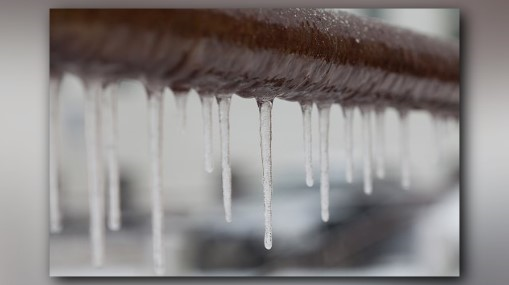Protecting Against Frozen Pipes in Cold Weather: Critical Strategies
Protecting Against Frozen Pipes in Cold Weather: Critical Strategies
Blog Article
How do you really feel when it comes to Helpful Tips to Prevent Frozen Pipes this Winter?

Cold weather can wreak havoc on your pipes, specifically by freezing pipelines. Right here's exactly how to prevent it from happening and what to do if it does.
Intro
As temperatures drop, the threat of frozen pipes increases, potentially resulting in costly repair services and water damage. Comprehending how to avoid icy pipes is critical for property owners in cool climates.
Prevention Tips
Shielding vulnerable pipes
Cover pipelines in insulation sleeves or use heat tape to safeguard them from freezing temperatures. Concentrate on pipelines in unheated or outside locations of the home.
Home heating methods
Keep indoor spaces properly heated up, specifically areas with plumbing. Open cupboard doors to enable cozy air to flow around pipes under sinks.
How to determine frozen pipes
Try to find lowered water circulation from faucets, unusual odors or noises from pipes, and visible frost on exposed pipes.
Long-Term Solutions
Structural adjustments
Consider rerouting pipelines far from exterior wall surfaces or unheated locations. Include additional insulation to attics, cellars, and crawl spaces.
Updating insulation
Purchase premium insulation for pipes, attic rooms, and wall surfaces. Correct insulation assists maintain regular temperatures and reduces the threat of frozen pipes.
Shielding Outdoor Pipes
Garden tubes and outdoor taps
Separate and drain yard tubes before wintertime. Install frost-proof spigots or cover outside faucets with protected caps.
Recognizing Icy Pipes
What causes pipes to freeze?
Pipelines ice up when revealed to temperature levels below 32 ° F (0 ° C) for extended periods. As water inside the pipes ices up, it increases, putting pressure on the pipe walls and potentially creating them to break.
Risks and damages
Icy pipelines can lead to supply of water interruptions, property damage, and pricey fixings. Ruptured pipelines can flood homes and create considerable architectural damage.
Signs of Frozen Pipes
Recognizing icy pipes early can prevent them from breaking.
What to Do If Your Pipes Freeze
Immediate actions to take
If you believe icy pipelines, keep taps available to relieve stress as the ice melts. Make use of a hairdryer or towels soaked in hot water to thaw pipes gradually.
Final thought
Preventing icy pipes calls for positive actions and quick feedbacks. By comprehending the reasons, signs, and safety nets, homeowners can safeguard their pipes throughout winter.
5 Ways to Prevent Frozen Pipes
Drain Outdoor Faucets and Disconnect Hoses
First, close the shut-off valve that controls the flow of water in the pipe to your outdoor faucet. Then, head outside to disconnect and drain your hose and open the outdoor faucet to allow the water to completely drain out of the line. Turn off the faucet when done. Finally, head back to the shut-off valve and drain the remaining water inside the pipe into a bucket or container. Additionally, if you have a home irrigation system, you should consider hiring an expert to clear the system of water each year.
Insulate Pipes
One of the best and most cost-effective methods for preventing frozen water pipes is to wrap your pipes with insulation. This is especially important for areas in your home that aren’t exposed to heat, such as an attic. We suggest using foam sleeves, which can typically be found at your local hardware store.
Keep Heat Running at 65
Your pipes are located inside your walls, and the temperature there is much colder than the rest of the house. To prevent your pipes from freezing, The Insurance Information Institute suggests that you keep your home heated to at least 65 degrees, even when traveling. You may want to invest in smart devices that can keep an eye on the temperature in your home while you’re away.
Leave Water Dripping
Moving water — even a small trickle — can prevent ice from forming inside your pipes. When freezing temps are imminent, start a drip of water from all faucets that serve exposed pipes. Leaving a few faucets running will also help relieve pressure inside the pipes and help prevent a rupture if the water inside freezes.
Open Cupboard Doors
Warm your kitchen and bathroom pipes by opening cupboards and vanities. You should also leave your interior doors ajar to help warm air circulate evenly throughout your home.
:strip_icc()/snow-outdoor-faucet-pipes-4af65d1e5e904fb1aa7bf74071fe5d89.jpg)
Do you really like reading up on How to prepare your home plumbing for winter weather? Put a short review further down. We would be delighted to listen to your views about this blog. Hoping that you come back again soon. Be sure to set aside a second to promote this page if you enjoyed reading it. We appreciate your readership.
Book Your Service Report this page